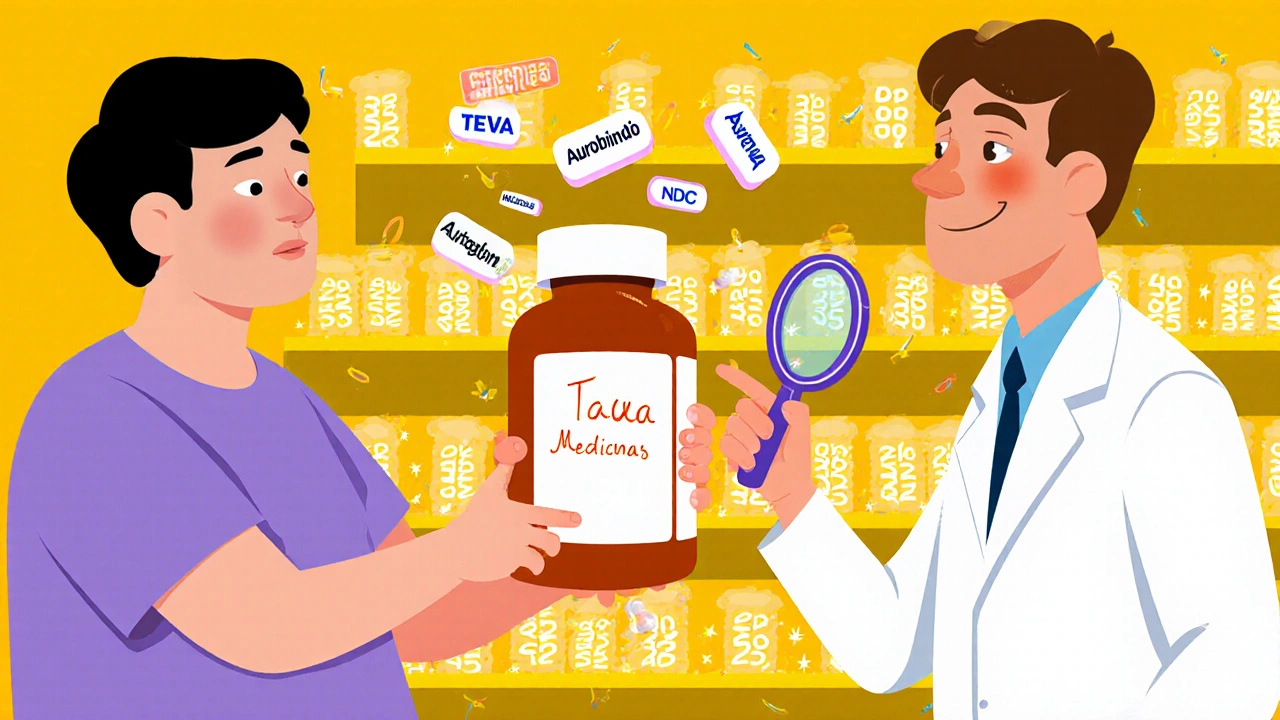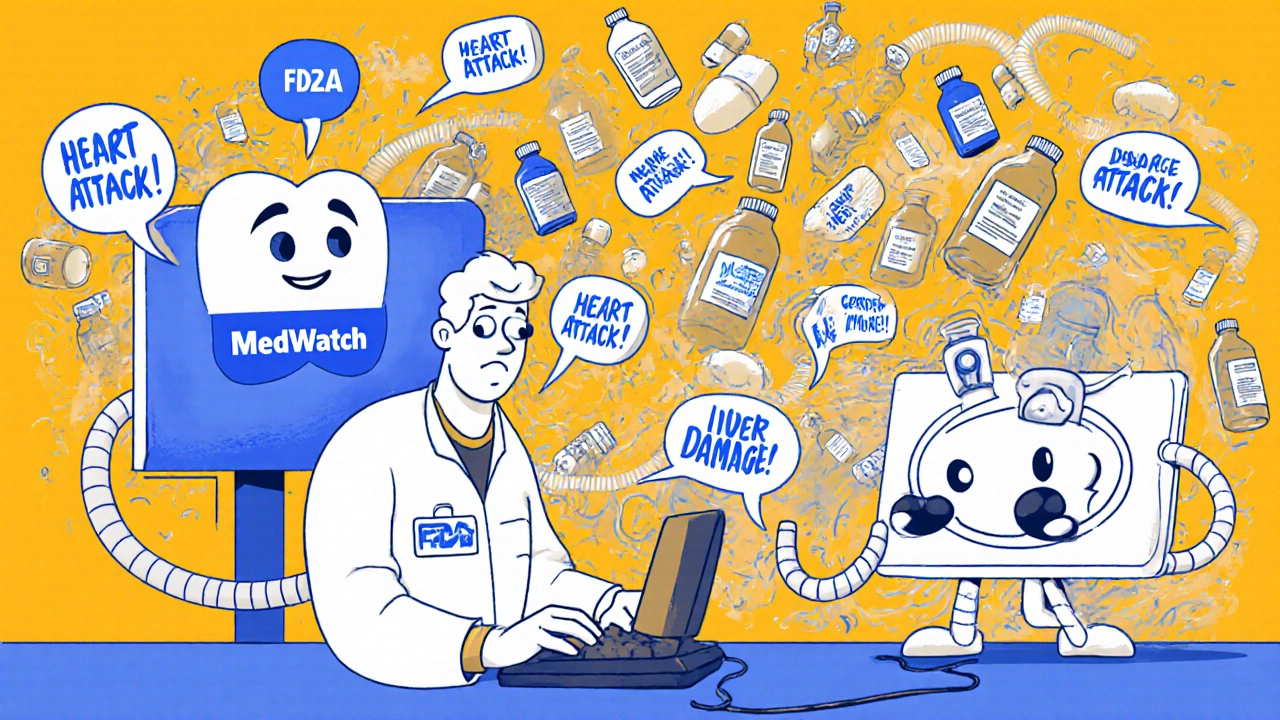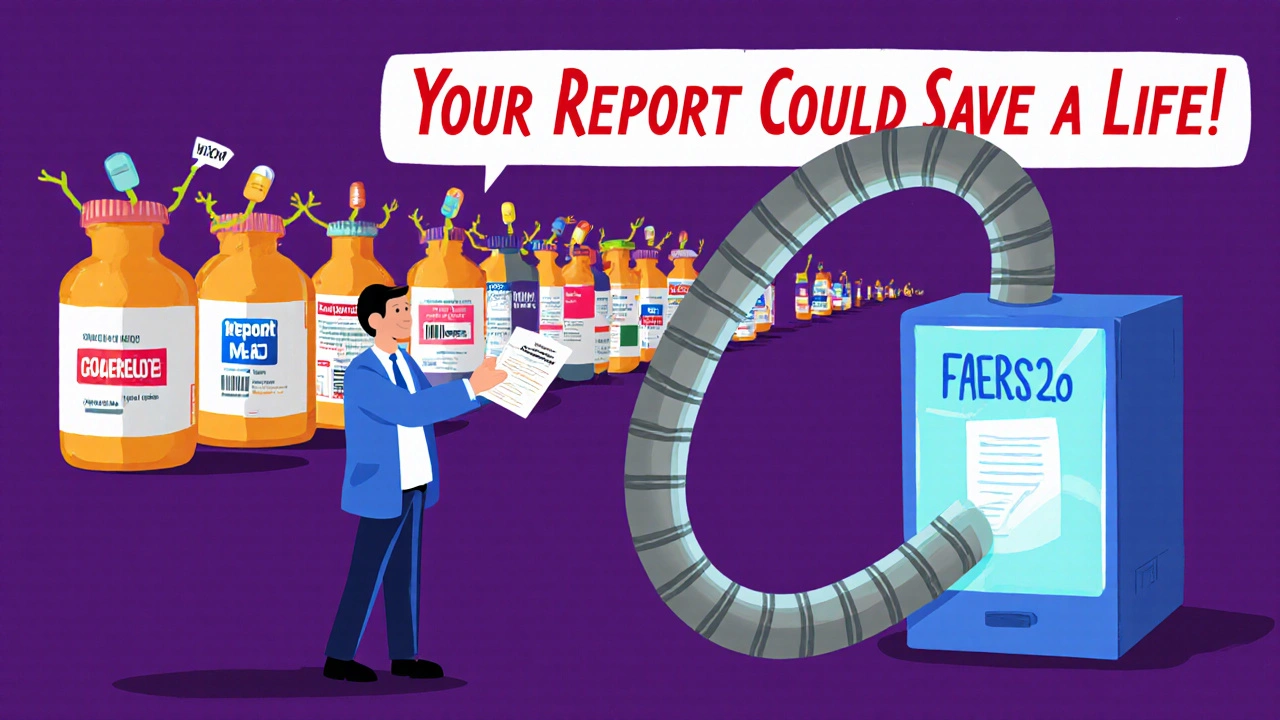
When a patient has a serious reaction to a generic drug, who do you report it to? And how do you know which manufacturer to name? It’s not as simple as it sounds. Even though the FDA treats brand-name and generic drugs the same under the law, the reality on the ground is very different. Generic drugs make up about 90% of all prescriptions filled in the U.S., yet they account for far fewer serious adverse event reports than brand-name drugs. This gap isn’t because generics are safer-it’s because the system isn’t working the way it should.
What Counts as a Serious Adverse Event?
A serious adverse event (SAE) is any harmful reaction to a drug that meets one or more of these criteria: it causes death, is life-threatening, requires hospitalization, leads to permanent disability, causes birth defects, or needs medical intervention to prevent lasting harm. These rules apply equally to brand-name and generic drugs. A heart attack after taking a generic statin, a severe allergic reaction to a generic antibiotic, or liver damage from a generic painkiller-all of these are SAEs and must be reported.
The FDA’s MedWatch program is the official channel for reporting these events. But here’s the catch: the law doesn’t distinguish between brand and generic. The same reporting rules, timelines, and definitions apply to both. So why the huge difference in reporting rates?
The Reporting Gap: Why Generics Are Underreported
Between 2004 and 2015, generic versions of drugs like losartan, simvastatin, and metoprolol made up over 80% of prescriptions. But brand-name manufacturers submitted nearly 70% of all serious adverse event reports for those same drugs-even after generics entered the market. That doesn’t add up. If generics are used far more often, they should generate more reports, not fewer.
Research from the NIH and the Institute for Safe Medication Practices shows this isn’t a fluke. It’s a pattern. Smaller generic manufacturers, which make up a large portion of the market, often lack dedicated safety teams. Many rely on outsourced contractors with limited resources. Meanwhile, big brand-name companies have entire departments built around tracking side effects. They’re trained, funded, and incentivized to report everything.
But the problem isn’t just with manufacturers. Healthcare providers struggle too. A 2020 survey found that 68% of doctors and pharmacists had trouble identifying which generic manufacturer a patient was taking. Why? Because pharmacies switch suppliers without telling patients. The bottle might say “metoprolol 50 mg,” but the tiny print on the label says “Made by Teva” or “Manufactured by Aurobindo.” Most patients don’t know-or care-what that means.
How to Report a Serious Adverse Event for a Generic Drug
If you’re a patient, caregiver, or healthcare provider and you suspect a serious reaction to a generic drug, here’s how to report it correctly:
- Check the medication bottle. Look for the manufacturer name. It’s usually printed in small type on the label or carton. Don’t rely on the pharmacy name-find the actual drugmaker.
- Find the NDC number. The National Drug Code (NDC) is a 10- or 11-digit number on the packaging. It uniquely identifies the drug, strength, dosage form, and manufacturer. Write it down.
- Go to MedWatch. Visit the FDA’s MedWatch website and select “Report a Problem.” Choose “Drug” as the product type.
- Fill out the form accurately. Under “Drug Name,” enter the generic name (e.g., “amlodipine besylate”). Under “Brand Name,” leave it blank unless the drug was dispensed under a brand name. In the “Manufacturer” field, enter the exact name from the bottle (e.g., “Teva Pharmaceuticals USA”).
- Describe the event clearly. Include when it started, symptoms, how long it lasted, and any treatments given. Use plain language. Avoid medical jargon unless necessary.
- Submit. You can file online, by fax, or by mail. Online is fastest. Keep a copy for your records.
Pro tip: If you can’t find the manufacturer name, use the DailyMed database (maintained by the National Library of Medicine) to look up the NDC number. It will tell you who made the drug. This adds about 10 minutes to the process, but it’s worth it.

Why This Matters: Safety Gaps and Real Risks
Generic drugs are chemically identical to their brand-name counterparts. But they’re not always the same. Differences in inactive ingredients-fillers, dyes, coatings-can affect how a drug is absorbed. For drugs with narrow therapeutic windows, like levothyroxine or warfarin, even small changes can cause serious problems.
Doctors have reported patients going from stable thyroid levels on one generic to crashing on another. Patients have had seizures after switching generic epilepsy drugs. These events are real. But if no one reports them, the FDA can’t detect a pattern. And without patterns, they can’t issue warnings, recall batches, or require changes.
The FDA admits this is a problem. In 2023, they launched FAERS 2.0, a new system that links reports directly to NDC codes. They’re also pushing pharmacies to include manufacturer names on prescription labels. A pilot program with major chains like CVS and Walgreens is already showing a 55% increase in accurate reporting.
What’s Being Done to Fix It
The FDA’s Generic Drug User Fee Amendments (GDUFA III), running from 2023 to 2027, includes $15 million specifically to improve post-market safety monitoring for generics. That’s a start. But it’s not enough.
Some hospitals are using barcode scanning at the point of administration. When a nurse scans the medication before giving it to a patient, the system logs the manufacturer automatically. In pilot studies, this boosted reporting accuracy by 63%. It’s simple, fast, and accurate.
Generic manufacturers are also waking up. In 2022, only 42% of generic companies had dedicated pharmacovigilance teams. By 2027, that number is expected to rise to over 70%, as spending in this area grows from $185 million to $320 million. The industry knows the stakes.
But the biggest change won’t come from regulators or manufacturers. It will come from you.

Your Role in Safer Medication Use
If you take a generic drug and feel something’s wrong-don’t ignore it. Don’t assume it’s “just in your head.” Don’t assume someone else will report it. If you’re a patient, ask your pharmacist: “Which company made this?” Write it down. If you’re a provider, make it part of your routine to check the bottle before prescribing or dispensing.
Reporting a serious adverse event takes 15 to 30 minutes. For generics, it might take longer. But that time could save a life. Maybe your report will be the one that triggers a safety alert for a drug thousands of others are taking. Maybe it will lead to a label change, a better formulation, or even a recall.
The system isn’t perfect. But it only works if people use it. And right now, too many people aren’t.
Do I have to report adverse events if I’m not a doctor?
Yes. Anyone can report a serious adverse event to the FDA through MedWatch-patients, family members, pharmacists, nurses, or caregivers. You don’t need to be a healthcare professional. Your report matters just as much as a doctor’s.
What if I don’t know the manufacturer of the generic drug?
Check the medication bottle or packaging for the manufacturer name. If it’s not visible, look up the National Drug Code (NDC) number on the DailyMed website (dailymed.nlm.nih.gov). This free tool will tell you exactly which company made the drug. You can also call the pharmacy-they’re required to keep this information on file.
Is it better to report to the brand-name manufacturer if I’m unsure?
No. Reporting to the brand-name manufacturer when the patient took a generic is inaccurate and misleading. The FDA needs to know which specific company’s product caused the reaction. Reporting to the wrong manufacturer delays detection of real safety issues and can cause the FDA to miss dangerous patterns.
How long do I have to report a serious adverse event?
There’s no strict deadline for patients or providers, but it’s best to report as soon as possible. Manufacturers are required to report serious and unexpected events to the FDA within 15 days of learning about them. The sooner you report, the sooner the FDA can act.
Can reporting a side effect cause me to lose access to my medication?
No. Reporting an adverse event does not affect your ability to get your prescription filled. The FDA keeps all reports confidential and does not share them with pharmacies, insurers, or prescribers. Your report is used only for safety monitoring.
What Happens After You Report
Once a report is submitted, it goes into the FDA’s FAERS database. Analysts look for patterns-like multiple reports of liver damage linked to a specific generic version of a drug. If a signal emerges, the FDA may request more data from the manufacturer, issue a safety alert, or even require changes to the drug’s labeling.
In 2021, a cluster of reports about low blood pressure in patients taking a specific generic version of clonidine led to a label update. The new label now warns about increased risk in elderly patients. That change happened because someone took the time to report it.
Every report counts. Even if you think it’s just one case, it might be the first sign of something bigger. And in the world of generic drugs-where the same pill can come from five different factories-those small differences matter more than ever.

 Health and Wellness
Health and Wellness
Heidi R
November 18, 2025 AT 01:02Ugh, I can't believe people still don't get this. It's not about the drug-it's about the *manufacturer*. If your pill comes from a factory in Bangalore with no QA team, don't act surprised when your blood pressure drops to 60/40. I reported mine. Took 22 minutes. No one cared. But I did my part.
Brenda Kuter
November 19, 2025 AT 05:00THEY KNOW. THEY ALL KNOW. The FDA, Big Pharma, the pharmacies-they're letting this happen on purpose. Why? Because generics are cheaper. And if a few people die from a bad batch of metoprolol? Well, that's just the cost of capitalism, baby. I saw a documentary once. The pills were made in a basement with a 3D printer. I'm not joking. I'm not even scared anymore. I'm just mad.
Shaun Barratt
November 20, 2025 AT 20:20While the general intent of this post is laudable, the technical precision required for accurate adverse event reporting cannot be overstated. The NDC code, as delineated by the FDA, is the sole unambiguous identifier for pharmaceutical products, and its omission in patient reporting constitutes a systemic failure in pharmacovigilance. Furthermore, the distinction between active and inactive ingredients-particularly with regard to bioequivalence thresholds-is often misunderstood by non-specialists. I urge all reporters to consult the Orange Book prior to submission to ensure correct product identification.
Iska Ede
November 21, 2025 AT 20:48Oh wow, so we're supposed to become amateur pharmacologists just to not die from a $4 pill? Congrats, America. You turned healthcare into a scavenger hunt with lethal consequences. 🙃 I spent 45 minutes Googling my NDC code last week. My cat judged me. My pharmacist didn't even know what I was talking about. But hey, at least I didn't have a seizure. This is normal now?
Gabriella Jayne Bosticco
November 23, 2025 AT 00:31This is such an important post. I work in a community pharmacy and I see this every day. Patients have no idea which manufacturer their generic is from-and they shouldn’t have to. It’s not their job. But if you do take the time to check the bottle, you’re doing more than most. Keep going. Your report might be the one that stops someone else from ending up in the ER. You’re not just reporting-you’re protecting.
Sarah Frey
November 24, 2025 AT 07:56The structural inequities in pharmacovigilance are profound and deeply concerning. While regulatory frameworks exist, their implementation is uneven and disproportionately burdens patients and frontline clinicians. The introduction of NDC-linked reporting systems is a necessary but insufficient step. We must institutionalize manufacturer transparency at the point of dispensing-mandating that pharmacy labels display the manufacturer name in legible, standardized typography. Until then, we are asking vulnerable populations to solve a systemically broken problem with individual diligence.
Katelyn Sykes
November 25, 2025 AT 06:48Just reported my mom's liver enzyme spike after switching generics. Took me 30 minutes. I didn't know what an NDC was until last night. Looked it up on DailyMed. Found out it was Aurobindo. Submitted it. Felt like a hero. Honestly? I think more people would report if it wasn't so confusing. The system needs to be simpler. Like, app-based. Scan the barcode. Done. No more digging. #GenericSafety
Gabe Solack
November 26, 2025 AT 04:43Big thank you to the OP for laying this out so clearly. 🙏 I’m a nurse and I’ve seen too many patients switch generics and then come back with weird symptoms. I always check the bottle now. I even write the manufacturer on the prescription note. Small thing. Huge difference. If you’re reading this and you’re on a generic? Look at your bottle. Right now. Seriously. It takes 10 seconds. You might save someone’s life. 💙
Yash Nair
November 28, 2025 AT 03:32USA is weak. Why do you trust Indian and Chinese generics? They make pills in dirty factories. I saw a video-workers in Bangladesh with no gloves, coughing on the pills. You think FDA cares? No. They let it happen because they love cheap drugs. I use only brand name. Pay more. Stay alive. You Americans are fools. Your system is broken because you are lazy. I am from India. I know what happens. I am not ashamed to say it.
Bailey Sheppard
November 30, 2025 AT 01:39Thank you for writing this. I used to think generics were all the same. Then my husband had a reaction and I learned the hard way. Now I always check the label. I even take a picture of the bottle and save it in my phone. It’s a little extra work, but peace of mind? Worth it. If you’re reading this and you’re scared to report-don’t be. Your voice matters. Even if it feels like shouting into the void. Someone’s listening.
Girish Pai
December 1, 2025 AT 13:11Pharmacovigilance architecture is fundamentally compromised by supply chain fragmentation and non-uniform labeling protocols. The absence of a centralized, blockchain-enabled NDC registry precludes real-time traceability, thereby enabling regulatory arbitrage by contract manufacturers. GDUFA III is a band-aid. What we need is a federated pharmacovigilance ontology with API-integrated pharmacy dispensing systems-leveraging HL7 FHIR standards-to enforce manufacturer-level accountability at the point of care. Without interoperability, we are merely rearranging deck chairs on the Titanic.